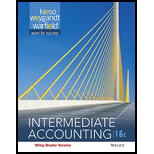
Carrying value: Carrying value is the amount that appears in
Fair value: Fair value is a selling price which is agreed by the buyer and seller. It is also the estimate of the potential market price of good, service or asset.
Unrealized holding gains and losses: An unrealized gain is a profit recorded on paper results from the investment. It occurs when shares prices increase after investor purchases it, but an individual has to sell it, till the time it is not sold the amount of increase in share price is recorded as an unrealized gain.
An unrealized loss is a loss recorded on paper results from the investment. It occurs when shares prices decrease after investor purchases it, but an individual has to sell it, till the time it is not sold the amount of decrease in share price is recorded as an unrealized loss.
Trading securities: Debt securities which are held with the intention to sell in the short term for profit are called trading securities.
Available-for-sale securities: Any securities which are purchased and held with an intention to sell before its maturity, or selling prior to the longest time period in case if security is without its maturity.
Held to maturity securities: Securities which are purchased and held till maturity with the intention to hold the investment existed at the time of purchase.
To determine the effect upon carrying values and earnings for each of the situations presented in the question document.
Given information: All the information related to the situation is provided in the question document.
Want to see the full answer?
Check out a sample textbook solution
Chapter 17 Solutions
Intermediate Accounting, Binder Ready Version
- Financial Accountingarrow_forwardSolve this general accounting problem?arrow_forwardThe owner's equity at the beginning of the period for Vivo Enterprises was $52,000. At the end of the period, assets totaled $110,000, and liabilities were $28,000. If the owner made an additional investment of $12,000 and withdrew $9,000 during the period, what is the net income or (net loss) for the period?arrow_forward
- What is the amount of the conversion costs?arrow_forwardSuppose the following two independent investment opportunities are available to Fitz, Inc. The appropriate discount rate is 12%. Year Project Gamma Project Theta 0 -$2,500 -$4,100 1 1,300 800 2 1,100 2,100 3 900 3,600 Calculate the profitability index (PI) for each project. Which project should the company accept based on the PI rule? Consider the following cash flows on two mutually exclusive projects for a company. Both projects require an annual return of 15%. Year Project A Project B 0 -$725,500 -$1,450,900 1 275,000 889,000 2 413,800 647,330 3 382,075 554,280 As a financial analyst for the company, you are asked the following questions: If your decision rule is to accept the project with the higher IRR, which project should you choose? Because you are fully aware of the scale problem associated with IRR rule, you calculate the incremental IRR for the cash flows. Based on your…arrow_forwardNeed helparrow_forward

 AccountingAccountingISBN:9781337272094Author:WARREN, Carl S., Reeve, James M., Duchac, Jonathan E.Publisher:Cengage Learning,
AccountingAccountingISBN:9781337272094Author:WARREN, Carl S., Reeve, James M., Duchac, Jonathan E.Publisher:Cengage Learning, Accounting Information SystemsAccountingISBN:9781337619202Author:Hall, James A.Publisher:Cengage Learning,
Accounting Information SystemsAccountingISBN:9781337619202Author:Hall, James A.Publisher:Cengage Learning, Horngren's Cost Accounting: A Managerial Emphasis...AccountingISBN:9780134475585Author:Srikant M. Datar, Madhav V. RajanPublisher:PEARSON
Horngren's Cost Accounting: A Managerial Emphasis...AccountingISBN:9780134475585Author:Srikant M. Datar, Madhav V. RajanPublisher:PEARSON Intermediate AccountingAccountingISBN:9781259722660Author:J. David Spiceland, Mark W. Nelson, Wayne M ThomasPublisher:McGraw-Hill Education
Intermediate AccountingAccountingISBN:9781259722660Author:J. David Spiceland, Mark W. Nelson, Wayne M ThomasPublisher:McGraw-Hill Education Financial and Managerial AccountingAccountingISBN:9781259726705Author:John J Wild, Ken W. Shaw, Barbara Chiappetta Fundamental Accounting PrinciplesPublisher:McGraw-Hill Education
Financial and Managerial AccountingAccountingISBN:9781259726705Author:John J Wild, Ken W. Shaw, Barbara Chiappetta Fundamental Accounting PrinciplesPublisher:McGraw-Hill Education





